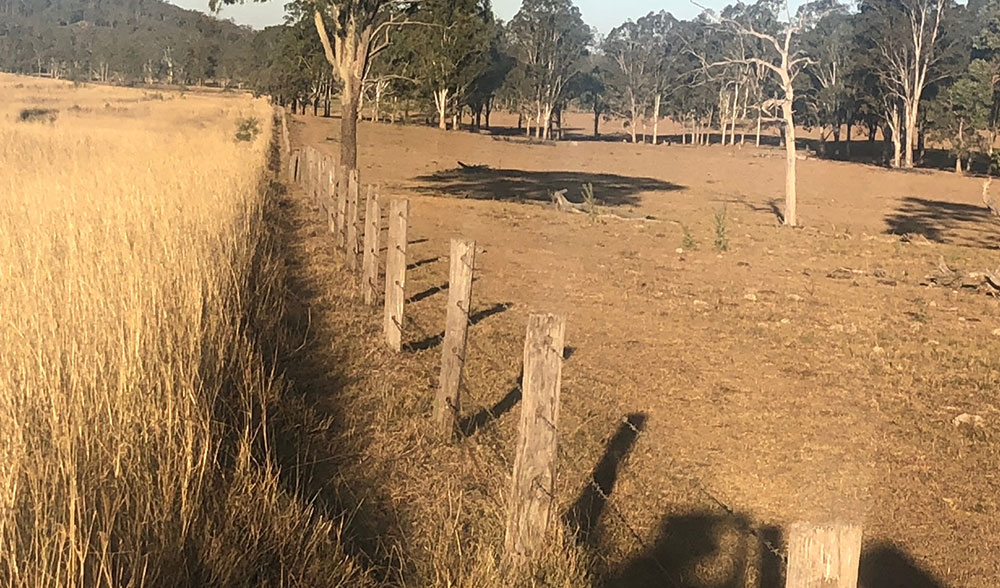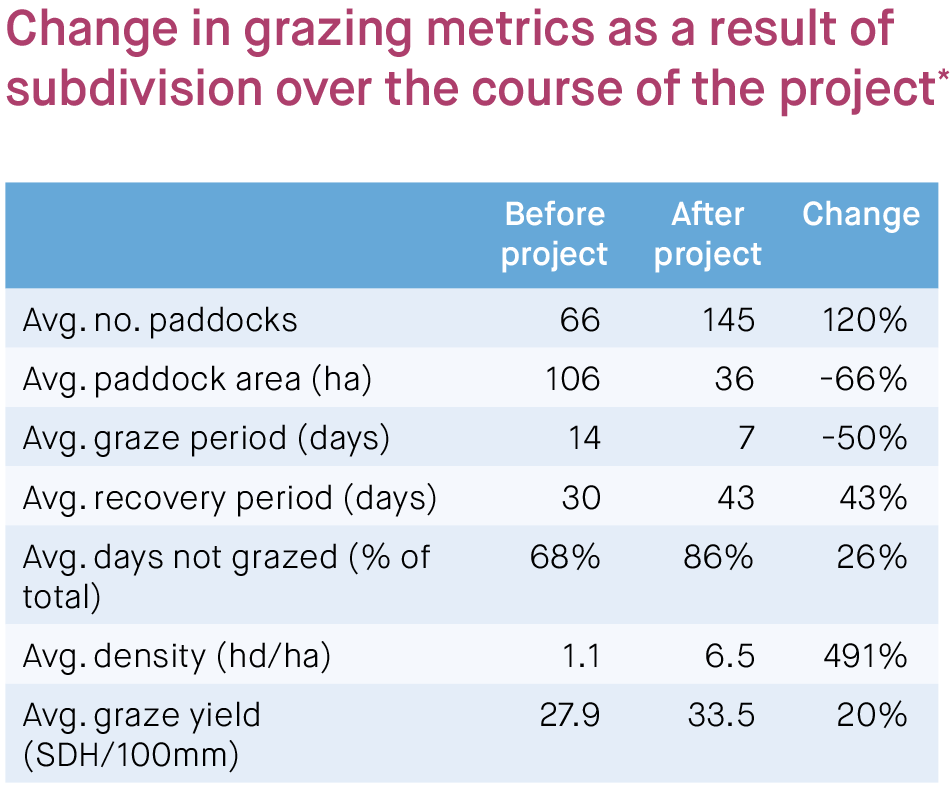Through Project Pioneer, producers learnt to implement regenerative management practices and grazing principles, including grass budgeting and resting country, to gain a better understanding of the relationship between economics and animals to increase on-farm efficiency.
Producers with mixed enterprises also explored different cropping systems and how they may contribute to a more productive business.
Rotational grazing is a key production strategy of regenerative management, and many Project Pioneer participants who had been in the program for a number of years wholeheartedly adopted this valuable grazing technique so that they now move cattle more frequently.
Setting up for this level of intensification does require significant investment in fencing and the addition of watering points for cattle. Project Pioneer producers made these changes throughout Project Pioneer, demonstrating their commitment to a more sustainable operating model.

Neighbouring properties: Project Pioneer participant’s property on left side of fence, September 2019
of fencing installed throughout the Project
number of livestock watering points installed
producers maintained or increased their stocking rate
participants maintained or decreased the number of times cattle were handled each year
producers increased number of times stock were adjusted to match feed available

*Data reflects participants who use Maia Grazing online grazing management software, not reflective of all project participants.
The data suggests that the physical change in paddock infrastructure has resulted in changed grazing management in ways that are known to be strongly linked to improved groundcover and reduced run-off.




Project Pioneer is funded by the partnership between the Australian Government’s Reef Trust and the Great Barrier Reef Foundation. The project is delivered by RCS with support from WWF, Maia Technology, Farm Map 4D and CQUniversity.
